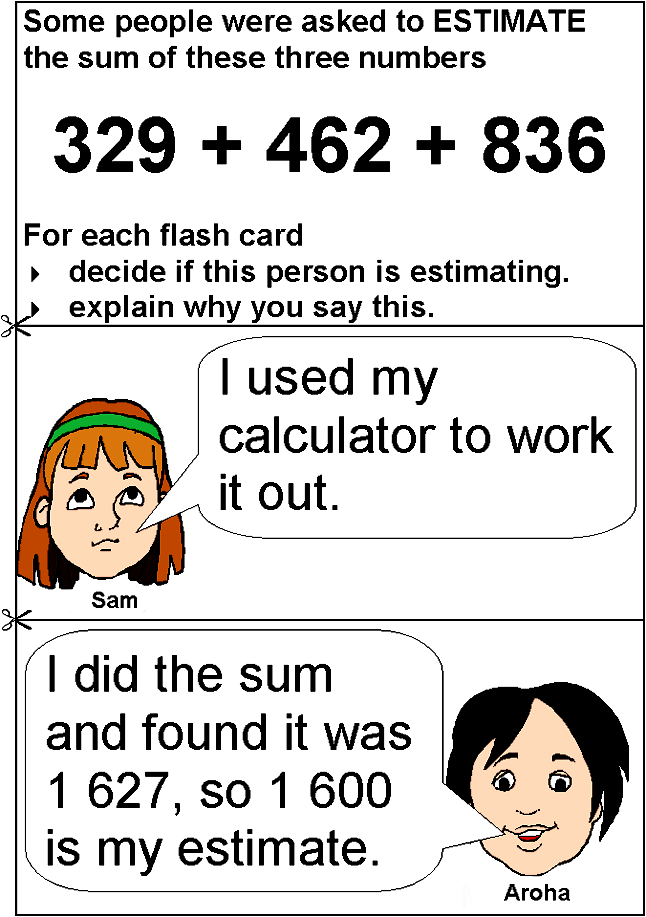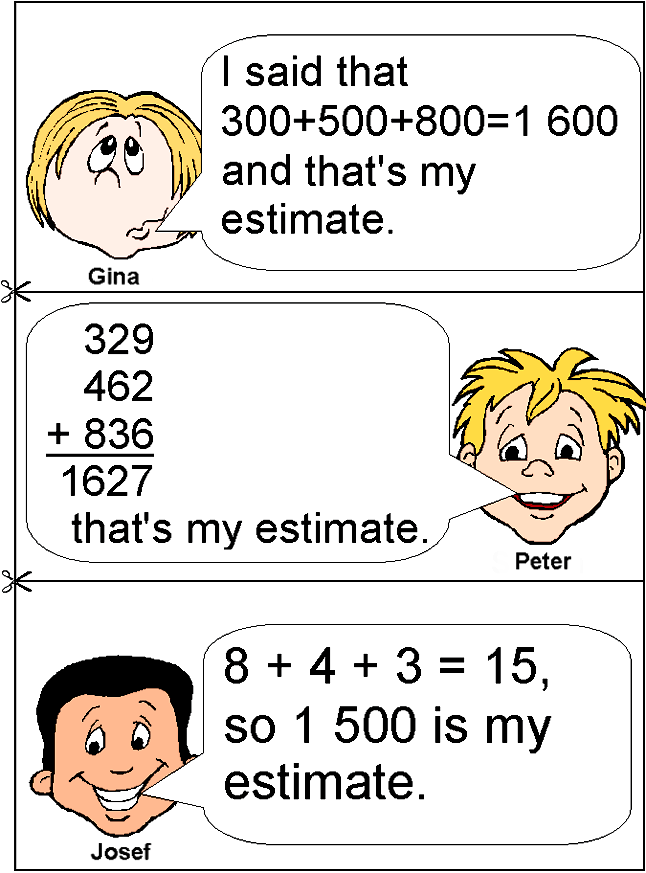Who is estimating? Addition
This task is about estimation for addition.
Your teacher will show you responses from five people who were asked to estimate this sum:
329 + 462 + 836
Some of them were estimating and some were not. For each flash card:
- circle either the tick or the cross in the box to show whether that person is / is not estimating; and
- explain your answer.
|
|||||||||||||||||||




 or
or  ) (Circle one)
) (Circle one)




 and
and and
and
